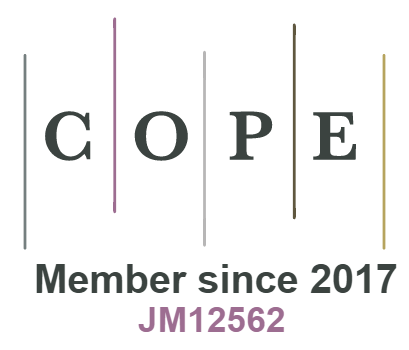Computer Vision: A Timely Opportunity
DOI:
https://doi.org/10.18034/ei.v9i2.571Keywords:
Computerized navigation, concurrent computing, computer vision movementAbstract
Different approaches to the study of computer vision have been taken into consideration. It begins with the collection of raw data and advances to methodologies and ideas that combine digital images, pattern recognition, machine learning, and computer graphics to produce new products, as well as new products themselves. In order to get crucial information, students can analyze images and videos to interpret events or descriptions, as well as discern patterns in the landscape, using computer vision. It makes use of a multi-spectrum application domain strategy in conjunction with a large amount of data in order to achieve its goals. In recent years, technological developments in computer vision have paved the way for the creation of novel agricultural applications. Precision yield forecasts for fruit and vegetable crops are particularly critical for improving harvesting, marketing, and logistics planning and execution. When a bridge is under stress or has a high volume of traffic, the geographical and temporal information provided by cars on the bridge reflects this. It is proposed to design a methodology for information gathering and dissemination by utilizing computer vision technology, which recognizes various items tracking and picture calibration via a quick regional neural convolution network, and a quick regional neural convolution network (Faster R-CNN). When dealing with small fish populations, it can be difficult to objectively assess the differences in behavior between individuals. The behavior of fish in aquaculture tanks has been studied with the use of a computer vision system that has been built in order to quantify these types of observations. Contained traffic load data is essential for bridge statistical analysis, security evaluation, and maintenance planning. This is particularly true for heavy trucks. From retail to agriculture, and across all industries, computer vision is having a big impact on organizations of all sizes and in all sectors. When a human eye is required to assess the situation, the significance of this becomes even more apparent. This paper provides information about computer vision technology, including short algorithms, issues, opportunities, and applications for computer vision in a range of fields in the year 2021, as well as information on computer vision in general. Information about computer vision applications in many fields is also included for the year 2021.
Downloads
References
Ahmed, A. A. A.; Paruchuri, H.; Vadlamudi, S.; & Ganapathy, A. (2021). Cryptography in Financial Markets: Potential Channels for Future Financial Stability. Academy of Accounting and Financial Studies Journal, 25(4), 1–9. https://doi.org/10.5281/zenodo.4774829
Amadasun, M., & King, R. (1989). Textural features corresponding to textural properties. IEEE Transactions on Systems, Man, and Cybernetics, 19(5), 1264–1274
Bakirtzis, A., and Spyros, K. (2016). Genetic algorithms. Advanced Solutions in Power Systems: HVDC, FACTS, and Artificial Intelligence: HVDC, FACTS, and Artificial Intelligence, 845-902. DOI: https://doi.org/10.1002/9781119175391
Blasco, J., Aleixos, N., Moltó, E. (2003). Machine vision system for automatic quality grading of fruit. Biosystems Engineering, 85(4), 415–423.
Bynagari , N. B. (2020). The Difficulty of Learning Long-Term Dependencies with Gradient Flow in Recurrent Nets. Engineering International, 8(2), 127-138. https://doi.org/10.18034/ei.v8i2.570
Bynagari, N. B. (2018). On the ChEMBL Platform, a Large-scale Evaluation of Machine Learning Algorithms for Drug Target Prediction. Asian Journal of Applied Science and Engineering, 7, 53–64. Retrieved from https://upright.pub/index.php/ajase/article/view/31
Bynagari, N. B. (2019). GANs Trained by a Two Time-Scale Update Rule Converge to a Local Nash Equilibrium. Asian Journal of Applied Science and Engineering, 8, 25–34. Retrieved from https://upright.pub/index.php/ajase/article/view/32
Bynagari, N. B., & Amin, R. (2019). Information Acquisition Driven by Reinforcement in Non-Deterministic Environments. American Journal of Trade and Policy, 6(3), 107-112. https://doi.org/10.18034/ajtp.v6i3.569
Bynagari, N. B., & Fadziso, T. (2018). Theoretical Approaches of Machine Learning to Schizophrenia. Engineering International, 6(2), 155-168. https://doi.org/10.18034/ei.v6i2.568
Chtioui, Y., Panigrahi, S., Backer, L. F. (2003). Self-organizing map combined with a fuzzy clustering for color image segmentation. Transactions of the ASAE, 46(3), 831–838.
Du, C-J, & Sun D-W. (2006). Automatic measurement of pores and porosity in pork ham and their correlations with processing time, water content and texture. Meat Science, 72(2), 294–302.
Ganapathy, A., Hossain, M. S., Rahman, M. M., Asadullah, ABM., Amin, R. (2021b). The Significant of Biases in Learning Algorithms Generalization. International Journal of Aquatic Science, 12(2), 3042-3052. http://www.journal-aquaticscience.com/article_134827.html
Ganapathy, A., Vadlamudi, S., Ahmed, A. A. A., Hossain, M. S., Islam, M. A. (2021a). HTML Content and Cascading Tree Sheets: Overview of Improving Web Content Visualization. Turkish Online Journal of Qualitative Inquiry, 12(3), 2428-2438. https://www.tojqi.net/index.php/journal/article/view/1724
Khan, W., Ahmed, A. A. A., Vadlamudi, S., Paruchuri, H., Ganapathy, A. (2021). Machine Moderators in Content Management System Details: Essentials for IoT Entrepreneurs. Academy of Entrepreneurship Journal, 27(3), 1-11. https://doi.org/10.5281/zenodo.4972587
Kleynen, O., Leemans, V., Destain, M-F. (2005). Development of a multi-spectral vision system for the detection of defects on apples. Journal of Food Engineering, 69(1), 41–49.
Leemans, V., Magein, H., & Destein, M-F. (1999). Defect segmentation on ‘Jonagold’ apples using color vision and a Bayesian classification method. Computers and Electronics in Agriculture, 23(1), 43–53.
Marique, T., Pennincx, S., Kharoubi, A. (2005). Image segmentation and bruise identification on potatoes using a Kohonen’s self-organizing map. Journal of Food Science, 70(7), E415–E417.
Matiacevich, S., Celis Cofré, D., Silva, P., Enrione, J., Osorio, F. (2013). Quality Parameters of Six Cultivars of Blueberry Using Computer Vision. International Journal of Food Science. https://doi.org/10.1155/2013/419535
Nandakumar, V., Hansen, N., Glenn, H. L., Han, J. H., Helland, S., Hernandez, K., Senechal, P., Johnson, R. H., Bussey, K. J. and Meldrum, D. R. (2016). Vorinostat differentially alters 3D nuclear structure of cancer and non-cancerous esophageal cells. Scientific reports 6. https://doi.org/10.1038/srep30593
Neogy, T. K., & Bynagari, N. B. (2018). Gradient Descent is a Technique for Learning to Learn. Asian Journal of Humanity, Art and Literature, 5(2), 145-156. https://doi.org/10.18034/ajhal.v5i2.578
Patel, K. K., Kar, A., Jha, S. N., and Khan, M. A. (2012). Machine vision system: a tool for quality inspection of food and agricultural products. Journal of food science and technology, 49(2), 123-141. https://doi.org/10.1007/s13197-011-0321-4
Zheng, C., Sun, D-W., Zheng, L. (2006). Recent applications of image texture for evaluation of food qualities – a review. Trends in Food Science & Technology, 17(3), 113–128.
--0--
Downloads
Published
Issue
Section
License
Engineering International is an Open Access journal. Authors who publish with this journal agree to the following terms:
- Authors retain copyright and grant the journal the right of first publication with the work simultaneously licensed under a CC BY-NC 4.0 International License that allows others to share the work with an acknowledgment of the work's authorship and initial publication in this journal.
- Authors are able to enter into separate, additional contractual arrangements for the non-exclusive distribution of the journal's published version of their work (e.g., post it to an institutional repository or publish it in a book), with an acknowledgment of its initial publication in this journal. We require authors to inform us of any instances of re-publication.









